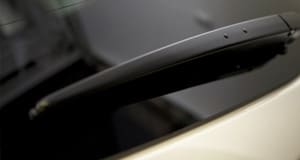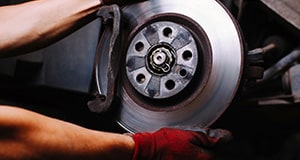Welcome to Our Parts Department
When your Chevy breaks down or needs parts replaced, the safest and most reliable fixes always use original equipment manufacturer parts. Our dealership is your one-stop source for every OEM Chevy part that you may need including brakes, mirrors, bumpers, and other items. Even if you plan of fixing your vehicle yourself, using original equipment manufacturer parts is the best way to ensure that your Chevy will continue running in top operating condition for decades to come.
Parts Request
* Indicates a required field
Your privacy is important to us.
Vandergriff Chevrolet takes your privacy seriously and does not rent or sell your personal information to third parties without your consent. Read our privacy policy.
What are the Benefits of OEM Parts vs Aftermarket Parts?
OEM Parts Ensure Top Quality
Using aftermarket parts, especially for those who fix their own cars or take them to independent garages, is always a temptation. This is because aftermarket parts can always be found that cost considerably less than the original manufacturer equipment. However, spending less up front, even when the apparent savings are considerable, can very easily end up costing far more down the road.
One of the reasons for this is that OEM parts have been quality tested, oftentimes over literally decades of development. Auto manufacturers design every part that goes on their cars for longevity, functionality and ease of maintenance. Unfortunately, the same is often not true for aftermarket parts. Many aftermarket parts substitute cheap materials for the sturdier ones used in OEM parts. And this can lead to diminished lifespans of those parts and even safety issues.
Aftermarket Parts can be Sketchy

For newer vehicles, one of the most serious problems with using aftermarket parts is that their use is often explicitly prohibited in the vehicle’s warranty. While you may be able to get away with using a different fuel line or brake pad than the one specified by the manufacturer, if any aftermarket part fails, causing damage to other systems or components within the vehicle, it is likely that the warranty will be voided. In the case of new cars, this can and will lead to potentially catastrophic costs
One example is the use of non-manufacturer-approved engine or drivetrain components. If any of these parts cause serious damage to the engine or drivetrain, the car owner is likely to be stuck with a bill totaling thousands of dollars that is neither covered by warranty nor likely to be within the owner’s ability to pay.
OEM Parts Fit Right Every Time

For older vehicles, where the warranty isn’t an issue, aftermarket parts can still present big risks. Anyone who has ordered vehicle parts off of eBay or out of a catalogue knows all too well how badly things can turn out.
It is not uncommon for an aftermarket part to take weeks to arrive, only for the buyer to find out that it doesn’t actually fit their vehicle. In many of these cases, getting a refund can prove to be impossible. And this is especially true when dealing with overseas vendors.
Even when the aftermarket parts do fit, they’re often designed in a way to work across multiple vehicle models. This means that they are not optimized for use in the car in which they’re being used. This invariably leads to a far shorter lifespan than would otherwise be the case with OEM parts. When these substandard parts are used in critical areas of the vehicle’s operation, they can lead to unanticipated breakdowns and dangerous failures.
For these reasons, OEM parts are always the safer and more reliable choice.
Contact
1200 W Interstate 20 West
Arlington, TX 76017
- Contact: (877) 755-6375
Hours
- Monday 7:00 am - 7:00 pm
- Tuesday 7:00 am - 7:00 pm
- Wednesday 7:00 am - 7:00 pm
- Thursday 7:00 am - 7:00 pm
- Friday 7:00 am - 7:00 pm
- Saturday 7:00 am - 4:00 pm
- Sunday Closed